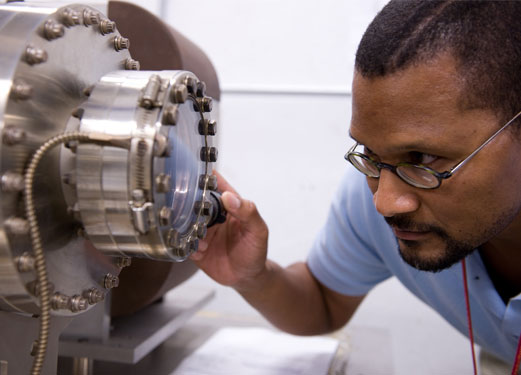Jefferson Lab Front Page Pictures and Captions 2008
 Neutron Duality - There are two ways to look at any mosaic. You can either choose to focus on one tile or step back to see the overall image. This analogy applies to a result recently published in Physical Review Letters from an experiment conducted in Hall A probing a phenomenon called quark-hadron duality. |
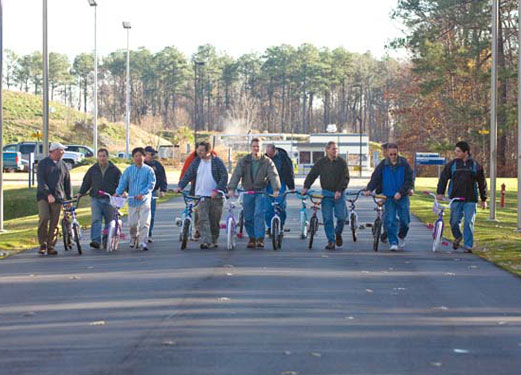 SANTA'S HELPERS ON A ROLL - Jefferson Lab staff parade children's bikes for the annual Marine Corps Toys for Tots event at the lab. Test Lab staff and friends of the Test Lab from the Accelerator and Engineering Divisions and the 12 GeV Upgrade project pooled their money for 18 bikes and helmets. The Accelerator Division's Larry King and Christiana Grenoble headed up the effort. Photo: Greg Adams. |
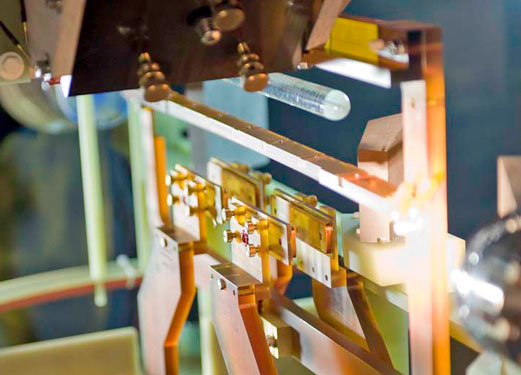 Target Spin - A key part of a target assembly in Hall A is a glass tube containing polarized helium gas. The polarized, or spinning, neutrons inside helium nuclei are the focus of a new study. Magnet coils (red, photo 2) align the neutrons' spin perpendicular to electrons that enter the target from a pipe (right, first two pictures). Hall A Work Coordinator Ed Folts checks on the progress of the target installation. Photo: Greg Adams. |
Electron Resources - Jefferson Lab's CEBAF accelerator has been furnishing electrons for nuclear physics experiments for more than a decade. Now that accelerator expertise is being put to use developing the International Linear Collider, the next super-high-energy machine on the drawing board for particle physics. Jefferson Lab's Ken Surles-Law (pictured above) is conducting research to develop rugged components for the ILC's source of spin-polarized electrons. Photo: Greg Adams. |
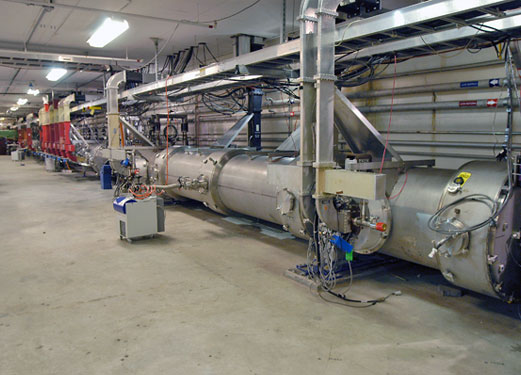 Bright Light/Dark Matter - While two accelerators have been operating at Jefferson Lab for more than a decade, only one was known for its research probing the particles that make up our universe. But things have changed. A particle physics experiment recently performed with Jefferson Lab's Free-Electron Laser, powered by the lesser-known and smaller accelerator (shown above), has had its results published in Physical Review Letters. Photo: Greg Adams. |
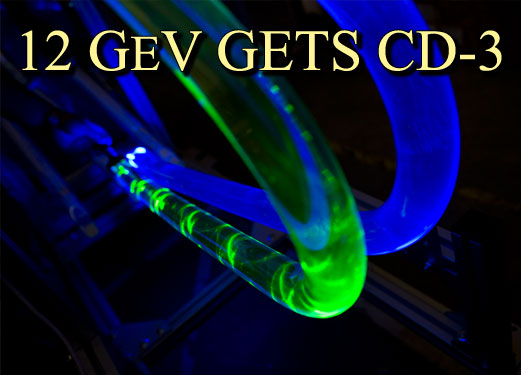 Upgrade Approved - Jefferson Lab has received approval from the U.S. Department of Energy to begin construction on its $310 million 12 GeV Upgrade project. The upgrade will provide physicists worldwide with an unprecedented ability to study the basic building blocks of matter - quarks and gluons - that make up 99 percent of the mass of our everyday world. Shown are sample photos from project R&D work. Photo: Greg Adams. |
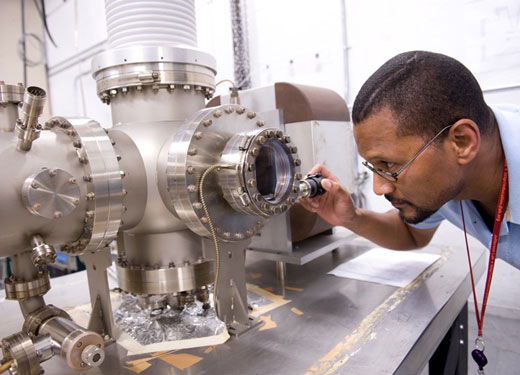 Next Collider - With the long-awaited startup of the Large Hadron Collider, attention is now turning to the progress of the design effort of the next super-high-energy machine in particle physics: the International Linear Collider. Ken Surles-Law, a JLab Accelerator Coordinator and Hampton University Ph.D. student, checks on component tests. This work is part of a research project on the ILC's electron source, which is based in part on JLab’s CEBAF accelerator electron source research. Photo: Greg Adams. |
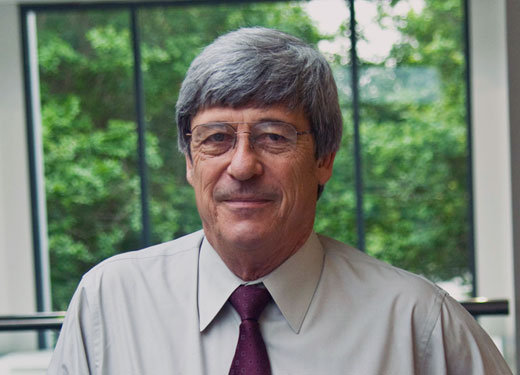 New Director Arrives - Hugh E. Montgomery, a highly regarded nuclear physicist with an extensive research portfolio and broad international experience, has taken over as the director of the U.S. Department of Energy's Thomas Jefferson National Accelerator Facility. For his biography, click here, or for additional information, click here. Photo: Greg Adams. |
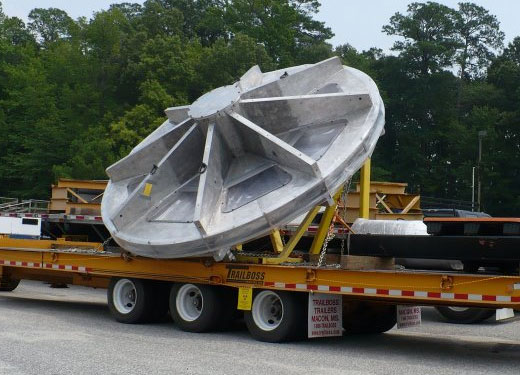 Magnet on the Move - The superconducting magnet assembly for the G0 (G-Zero) experiments was removed from Hall C in late July. The magnet endcaps, shown on the truck bed, were removed first. Then the core of the superconducting magnet assembly was carefully rotated and transported up the hall truck ramp and out to the lead storage building. During the experiments, the magnet directed particles of interest into the G0 detectors. Photos: Stephen Wood. |
Silicon at the Center - Modern computers are built on it, and it comprises a quarter of the Earth's crust. Now silicon is helping scientists detect particles in JLab's Experimental Hall B. This device, called a scintillation hodoscope, features a material (beneath dark cover and foil) that releases light when struck by a charged particle. The green fibers conduct that light to newly developed silicon chips, called Multi-Pixel Photon Counters, for amplification and conversion into electric signals. Photo: Stepan Stepanyan. |
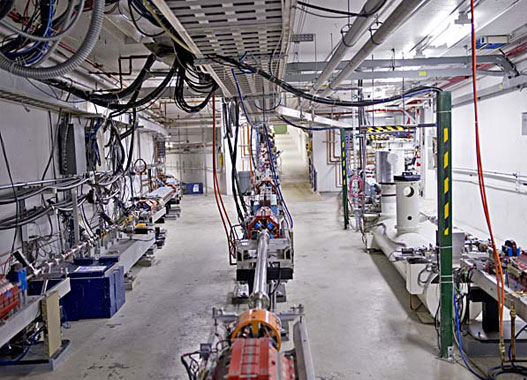 Switch Hitter - Electrons from Jefferson Lab's accelerator pass through the beam switchyard on their way to experiments in the experimental halls. The line on the left pipes electrons to Hall C, the middle leads to Hall B, and the right goes to Hall A. The stop sign-shaped red/blue magnets and the long powder-blue magnets focus and steer the beams of electrons. Photo: Greg Adams. |
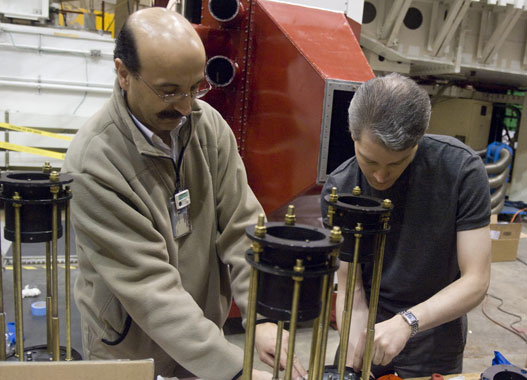 Spin Off - Add up the known sources of the proton's spin, and they don't add up to the proton's spin. The goal of SANE - the Spin Asymmetries on the Nucleon Experiment - is to help scientists investigate the detailed spin structure of protons in the nucleus. Physicists Zein-Eddine Meziani (with mustache), Brad Sawatzky and Whit Armstrong (with beard), all of Temple University, assemble a new Cerenkov detector for SANE. The experiment is set to run in Hall C in the fall. |
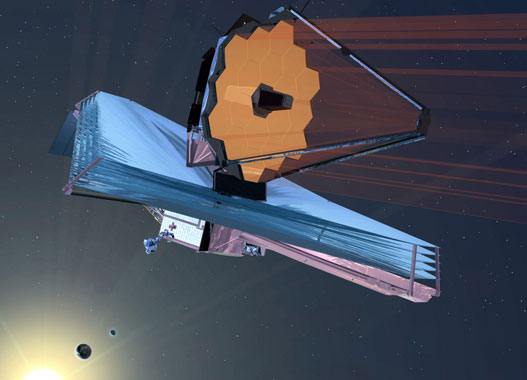 A Bigger Chill - Members of Jefferson Lab's Cryogenics Department are among the planet's best at what they do. Now they're lending their super-cool expertise to a project that's out of this world. They're helping NASA in testing its James Webb Space Telescope, the next generation of space-based technology that will replace the Hubble. |
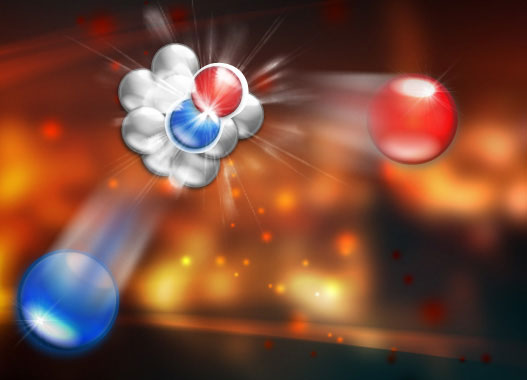 Nuclear Pairs - Like children playing a game of tag, some protons and neutrons also link up briefly inside the nucleus of the atom and then rapidly split apart. These pairings have now been quantified in the first simultaneous measurement of such pairings and their constituents. The result was published in Science Express on May 29. |
 Going Green - About 6.5 acres of Jefferson Lab's 206-acre campus have been seeded with wildflowers. Now in full bloom near the lab's administration building and accelerator site, the flowers have delivered a triple benefit: enhanced aesthetics, improved environmental diversity and reduced maintenance costs. |
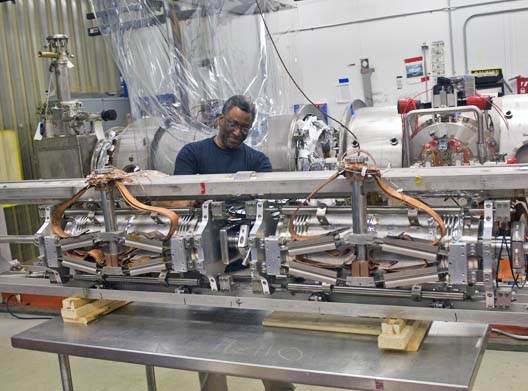 Upgrade Testing -Progress continues on JLab's 12 GeV Upgrade project. A technician prepares the Horizontal Test Bed for accelerator research and development testing. Two 12 GeV-style accelerating cavities will be re-installed in the Test Bed to extend earlier R&D tests that confirmed the cavities meet specifications. The 12 GeV Upgrade project will double the energy of JLab's accelerator, allowing scientists to venture into new areas of physics research. |
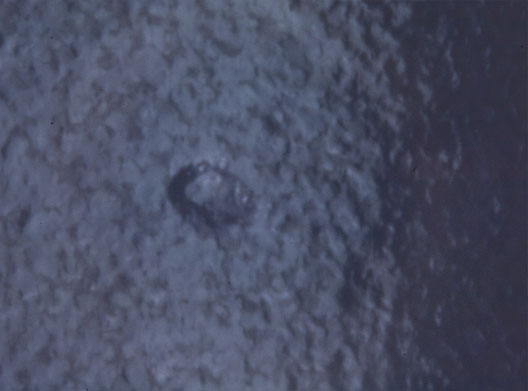 Portrait of a Gremlin -A novel way of looking inside accelerator components has given scientists their first clear snapshot of a performance-killing defect. Researchers suspect that the tiny blob (about the width of a human hair) on this otherwise smooth surface is preventing the component being tested at Jefferson Lab from reaching its design specifications. |
|
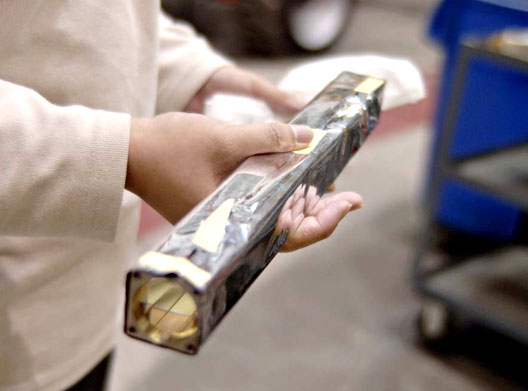
BigCal Shines On - Lead glass bars in the BigCal detector in JLab's Experimental Hall C were damaged by radiation exposure, making them almost opaque. Researchers treated the bars with a portable UV light panel they designed and built. Upon removing the panel, they found the 1,744 bars "cured," their transparency restored. This ingenious process of curing the bars while still installed in the detector allowed the experiment to resume on schedule. |
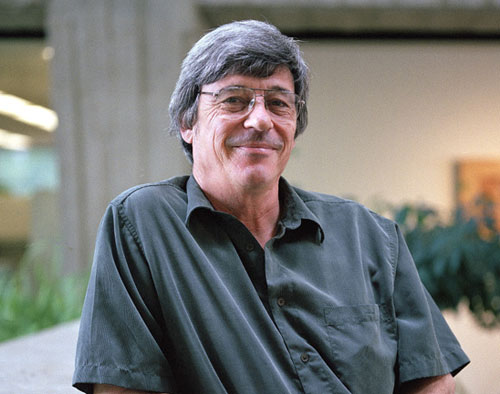 Hugh Montgomery Named JLab's New Director - Hugh E. Montgomery, a highly regarded nuclear physicist with an extensive research portfolio and broad international experience, today was named director of the Department of Energy's Thomas Jefferson National Accelerator Facility. |
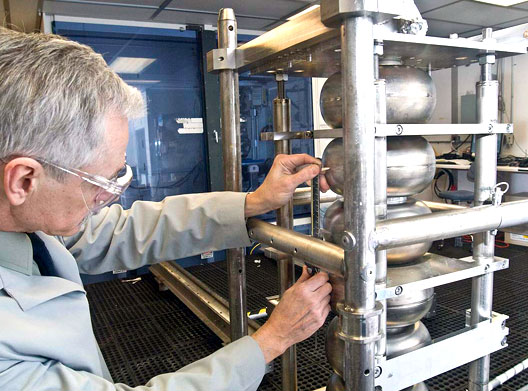
Finishing Touches - It's not often that major-league baseball and nuclear physics get to share the limelight, but that's what's happening at the Department of Energy's Jefferson Lab. The baseball connection involves a nine-cell niobium cavity developed by KEK accelerator scientists in Japan as one of several designs being tested for development for the proposed International Linear Collider. JLab is providing its superconducting radiofrequency expertise and specialized processing facilities. |
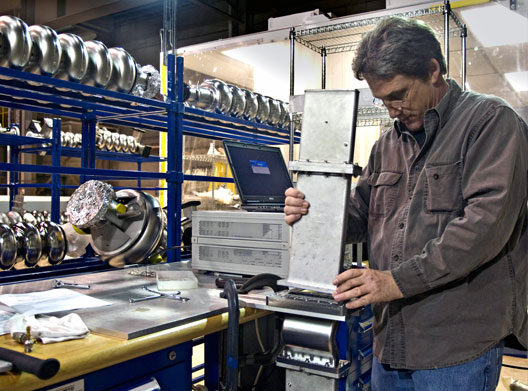 TUNING UP - Senior Technician Danny Forehand prepares to test a "dogleg" radio frequency waveguide in Jefferson Lab's Superconducting Radio Frequency Cavity Tuning Facility. After passing RF acceptance testing, the component will become part of a Continuous Electron Beam Accelerator Facility cryomodule. Jefferson Lab is a world-leader in SRF technology and capabilities. |


